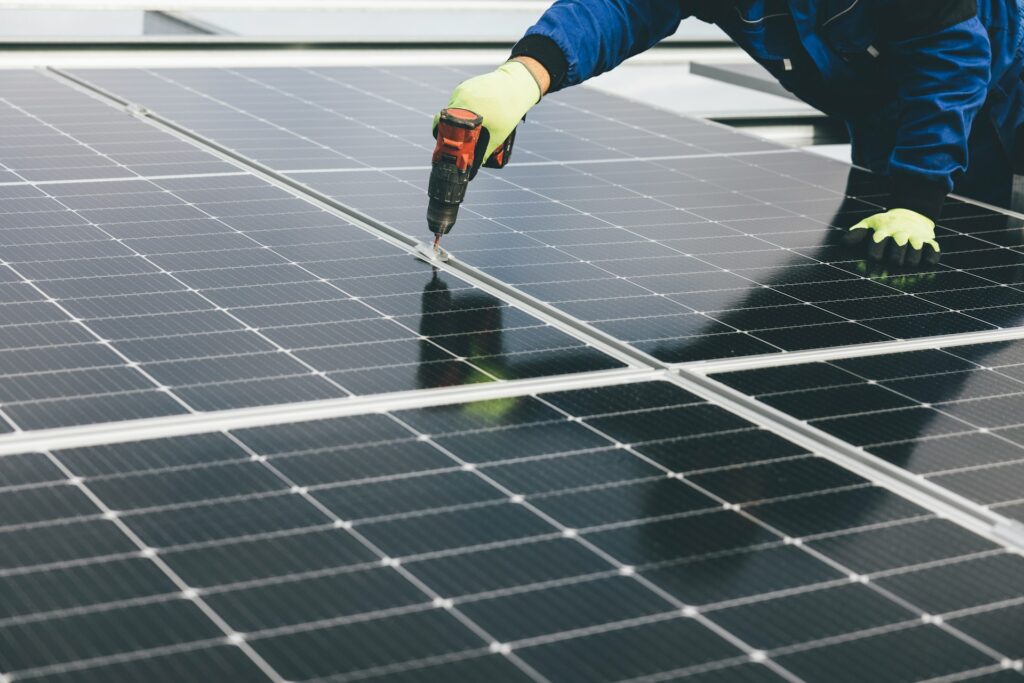- A home EV solar system can cover all your charging requirements by 2025. Depending on the car you drive and your driving habits, it usually takes 6 to 12 solar panels.
- Add solar battery storage to your electric vehicle, and you will be able to charge it 24/7, including at night or during power failures.
- Solar powering your vehicle can help you save over $1000 per year compared to using grid-supplied electricity.
- A reputable solar roof company will ensure a quality installation and help you to take full advantage of all the incentives available.
- States like Minnesota are a great market for solar + EV setups because of the incentives they offer and long summer days.
Driving Towards Energy Independence
2025 will be a very important year for electric cars and renewable energy. More and more homes are buying electric vehicles (EVs), which raises an important question: can a solar system at home really power my electric vehicle? Yes, the answer is yes. When you put solar panels on an EV, you make a self-sufficient ecosystem that gives you energy independence, saves you money, and has a small impact on the environment. This guide will show you exactly how it works.
How Many Solar Panels Does it Take to Power an EV?
How many panels you will need is determined by your car and how much you drive. A typical EV uses between 3,000 kWh and 4,000 kWh annually. A standard solar panel for residential use produces about 400 watts.
You’ll need somewhere from 6 to 12 solar panels to fully offset the energy consumption of your electric vehicle.
- A more energy-efficient electric vehicle, such as a Tesla Model 3, will require fewer panels.
- The energy requirements of a larger EV, such as a Ford F-150 Lightning, will require more solar panels.
An expert solar roofing company can calculate the number of solar panels you need based on how your vehicle is used and what driving style it has.
The Role of Solar Battery Storage?
Solar panels provide power during the day, but what about charging your electric car at night? That’s when solar battery storage comes in.
Battery systems store the energy that your solar panels generate during the day and make it readily available to you whenever needed. This means for EV users:
- Charge your vehicle at night with the energy that is stored in the battery, instead of using expensive grid electricity.
- A battery will ensure that your vehicle and home are powered in the event of an outage. This provides true energy resilience.
Adding a battery is an excellent investment to maximize the value of your solar power system and provide convenience and security.
Benefits for the Environment and Financially
In 2025, pairing your EV with solar will be one of the best financial decisions you make.
-
Significant Savings:
The grid electricity rate is continuing to increase, which makes public charging or home charging more expensive. Solar energy can help you save money on your electric vehicle. You could potentially save $1,000 per year or more.
-
Rapid ROI:
A full solar + battery system is a big investment, but the money you save on your home electricity and charging your electric vehicle can pay for itself in as little as 5 to 7 years.
-
Zero Emission Driving:
Solar power allows you to drive with zero emissions. Your EV is truly sustainable because you’re using clean, renewable energy to charge it.
Local Considerations (Solar Panels in MN)
If you live in a northern state like Minnesota, you might have some questions about how solar panels work in cold, cloudy weather. The good news is that solar panels work very well in our climate.
-
Cold Weather Efficiency:
The solar panels work better in the cold than they do in hot temperatures.
-
Minnesota Incentives:
The Minnesota state government and utility companies offer a variety of incentives such as federal tax credits and net metering, making solar panel installations in MN even more affordable.
-
Local expertise:
A local solar roofing company knows how to design a system that takes into account the weather in your area so that it can make the most energy with the right tilt and placement to handle snow and long summer days.
Solar FAQs Answered (Quick-fire section)
- Can solar panels fully charge an EV?
Yes! With a right-sized residential solar system, you can generate enough electricity to cover your EV charging needs. The average EV only requires about 6-12 panels to offset its annual energy consumption.
- Do I need battery storage to charge my EV with solar?
Not required, but highly recommended. A battery allows you to store the solar energy you generate during the day and use it to charge your car at night, providing ultimate convenience and protection against blackouts.
- What’s the cost of a home EV solar setup in 2025?
The total cost for a solar system and battery storage to power a home and EV can range from $15,000 to $25,000 or more, before incentives. This cost is significantly reduced by the 30% federal solar tax credit and other state rebates.
- Will solar panels still work in winter?
Yes! Solar panels generate electricity from light, not heat. While shorter days and cloudier skies in winter will reduce production, the system is designed to account for this. In fact, panels can work more efficiently in colder temperatures.
- How long does it take to charge an EV with solar?
The charging time depends on your EV model and the type of charger you use. A Level 2 charger can typically provide a full charge in 7-12 hours, using electricity generated and/or stored by your solar system.
Steps to Get Started with EV Solar at Home in 2025
- Calculate your EV’s energy consumption by evaluating your driving habits, average mileage and your driving history.
- A home evaluation is a must. Speak to a reputable solar roofing company for an expert assessment of your roof and the energy consumption.
- With the help of an expert, you can design your system to include the right number and type of solar panels. You can also choose a battery.
- Your solar partners can assist you with federal tax credits and state incentives that will lower the upfront cost.
- After installation, your system will work perfectly with your home and EV charger, giving you clean, reliable power.
Conclusion
Powering your electric vehicle entirely from home solar in 2025 is not only possible but also a smart, sustainable choice. By combining the right number of panels with solar battery storage, you can achieve true energy independence and protect yourself from rising utility rates. This is more than a simple home improvement; it’s an investment in a cleaner, more secure energy future.





